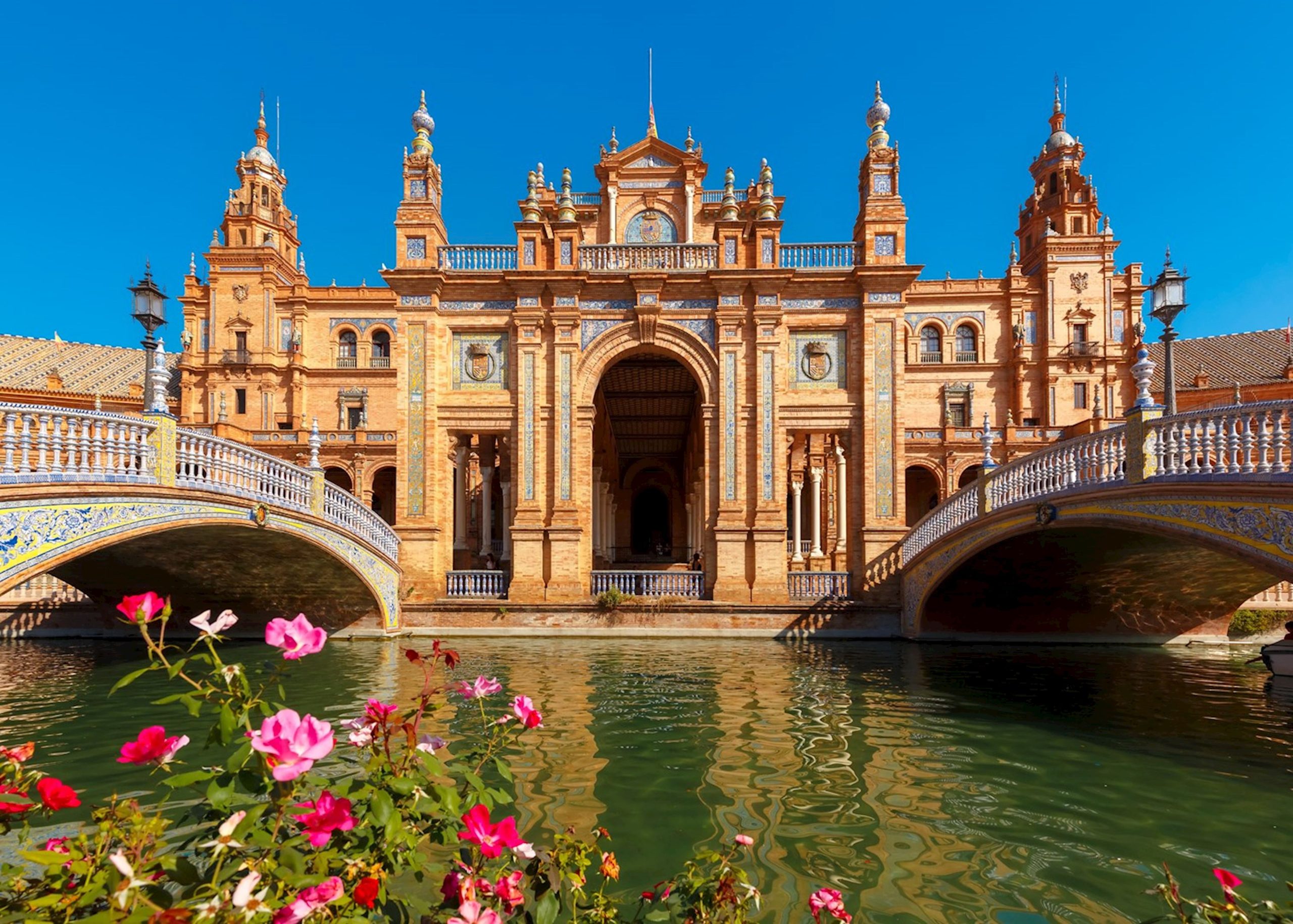Spain, a land of sun-kissed shores, vibrant culture, and passionate people, is also a gastronomic paradise. From the bustling tapas bars of Barcelona to the Michelin-starred temples of haute cuisine in San Sebastián, Spain offers a diverse and delectable culinary experience that tantalizes the senses and leaves a lasting impression. This article delves into the heart of Spanish cuisine, exploring iconic dishes, regional specialties, and some of the best restaurants that showcase the country’s culinary prowess.
A Tapestry of Flavors: Iconic Spanish Dishes
No exploration of Spanish food is complete without indulging in its most iconic dishes. These culinary staples are deeply ingrained in the country’s culture and history, representing the essence of Spanish flavors:
-
Paella: Perhaps the most famous Spanish dish, paella originates from Valencia. This rice dish, cooked in a wide, shallow pan, is typically flavored with saffron, vegetables, and seafood (paella de marisco) or meat (paella valenciana with rabbit and chicken). Each region puts its own spin on it, but the Socarrat (the crispy, slightly burnt layer of rice at the bottom of the pan) is always the most coveted part.
-
Tapas: More than just a dish, tapas are a way of life in Spain. These small, savory snacks are meant to be shared and enjoyed with drinks, fostering a social and convivial atmosphere. Tapas can range from simple olives and manchego cheese to more elaborate creations like patatas bravas (fried potatoes with spicy sauce), gambas al ajillo (garlic shrimp), and croquetas (breaded and fried béchamel fritters). Each bar often has its own specialty, making tapas hopping a delightful culinary adventure.
-
Jamón Ibérico: Considered a delicacy, Jamón Ibérico is cured ham made from Iberian pigs, known for their black hooves and diet of acorns (bellota). The curing process can take years, resulting in a rich, nutty flavor and melt-in-your-mouth texture. Served thinly sliced, Jamón Ibérico is a true indulgence.
-
Gazpacho: A refreshing cold soup originating from Andalusia, gazpacho is perfect for hot summer days. Made with blended tomatoes, cucumbers, peppers, onions, garlic, and olive oil, it’s a light and flavorful dish.
-
Tortilla Española: Also known as a Spanish omelet, this simple yet satisfying dish is made with potatoes, onions, and eggs. Cooked slowly in olive oil, it’s a staple in homes and bars throughout Spain.
Regional Culinary Gems: A Taste of Diversity
Spain’s diverse geography and history have given rise to a rich tapestry of regional cuisines. Each region boasts unique ingredients, cooking techniques, and dishes that reflect its cultural identity:
-
Basque Country (País Vasco): Known for its innovative and avant-garde cuisine, the Basque Country is home to some of the world’s best chefs and restaurants. Pintxos (Basque tapas) are a must-try, as is bacalao al pil pil (cod cooked in garlic and olive oil).
-
Catalonia: Influenced by its Mediterranean location, Catalan cuisine features fresh seafood, vegetables, and olive oil. Pa amb tomàquet (bread rubbed with tomato and olive oil) is a simple yet delicious staple, while escalivada (roasted vegetables) and crema catalana (a custard dessert similar to crème brûlée) are also popular.
-
Andalusia: This southern region is known for its Moorish influences, evident in dishes like gazpacho and salmorejo (a thicker, creamier version of gazpacho). Fried fish (pescaíto frito) and sherry wine are also essential parts of the Andalusian culinary experience.
-
Galicia: Located in northwestern Spain, Galicia is renowned for its seafood. Pulpo a la gallega (Galician-style octopus), empanadas (savory pies), and pimientos de Padrón (small green peppers) are just a few of the regional specialties.
-
Madrid: The capital city offers a blend of cuisines from across Spain. Cocido Madrileño (a hearty chickpea stew) and bocadillo de calamares (a calamari sandwich) are local favorites.
Dining Destinations: The Best Restaurants in Spain
Spain’s culinary scene is thriving, with a mix of traditional tapas bars, innovative restaurants, and Michelin-starred establishments. Here are some of the best restaurants that showcase the country’s gastronomic excellence:
-
El Celler de Can Roca (Girona): Consistently ranked among the world’s best restaurants, El Celler de Can Roca is known for its innovative and avant-garde cuisine. The three Roca brothers – Joan (head chef), Josep (sommelier), and Jordi (pastry chef) – combine their talents to create a truly unforgettable dining experience.
-
Mugaritz (San Sebastián): Chef Andoni Luis Aduriz pushes culinary boundaries at Mugaritz, offering a multi-sensory dining experience that challenges diners’ perceptions of food. The restaurant is known for its innovative techniques and playful presentation.
-
Asador Etxebarri (Axpe): Located in the Basque Country, Asador Etxebarri is renowned for its grilled dishes. Chef Bittor Arginzoniz uses custom-made grills to cook everything from seafood to meat to perfection, highlighting the natural flavors of the ingredients.
-
Tickets Bar (Barcelona): Although closed since 2020, Tickets Bar, by Albert Adrià, revolutionized the tapas scene. Its playful and innovative approach to tapas, with dishes like liquid olives and air bread, made it a must-visit destination for food lovers. (While no longer operating, it’s legacy and influence are undeniable)
-
DiverXO (Madrid): Chef Dabiz Muñoz’s DiverXO offers a daring and innovative dining experience. Known for its avant-garde techniques and bold flavor combinations, it is a 3 Michelin-starred restaurant that is sure to thrill.
-
Restaurante Botín (Madrid): Claiming to be the oldest restaurant in the world, Botín offers traditional Castilian cuisine in a historic setting. Their cochinillo asado (roast suckling pig) is a must-try.
-
Arzak (San Sebastián): Run by Juan Mari Arzak and his daughter Elena Arzak, Arzak is a pioneering restaurant that has been at the forefront of Basque cuisine for decades. The restaurant is known for its innovative techniques and use of local ingredients.
Beyond the Plate: Experiencing Spanish Food Culture
To truly immerse yourself in Spanish food culture, consider these experiences:
-
Visit a local market: Explore the vibrant markets of Spain, such as La Boqueria in Barcelona or Mercado Central in Valencia, to discover fresh produce, seafood, and local specialties.
-
Take a cooking class: Learn to prepare traditional Spanish dishes in a hands-on cooking class. Many schools offer classes for tourists.
-
Go on a wine tour: Spain is a major wine producer, with diverse wine regions like Rioja, Ribera del Duero, and Priorat. Take a wine tour to learn about the winemaking process and sample local wines.
-
Participate in a food festival: Spain hosts numerous food festivals throughout the year, celebrating everything from seafood to wine to chocolate.
Conclusion: A Feast for the Senses
Spanish cuisine is a vibrant and diverse tapestry of flavors, textures, and aromas. From the simple pleasures of tapas to the sophisticated creations of Michelin-starred restaurants, Spain offers a culinary experience that is sure to delight every palate. Whether you’re savoring paella on the beach, indulging in Jamón Ibérico, or exploring the regional specialties, a journey through Spanish food is a feast for the senses and a celebration of the country’s rich cultural heritage. So, pack your bags, sharpen your appetite, and prepare to embark on a culinary adventure that will leave you craving more.
/plaza-de-espa-a-at-dusk--seville--spain-499790854-5aa55d6c1f4e130037937244.jpg)

